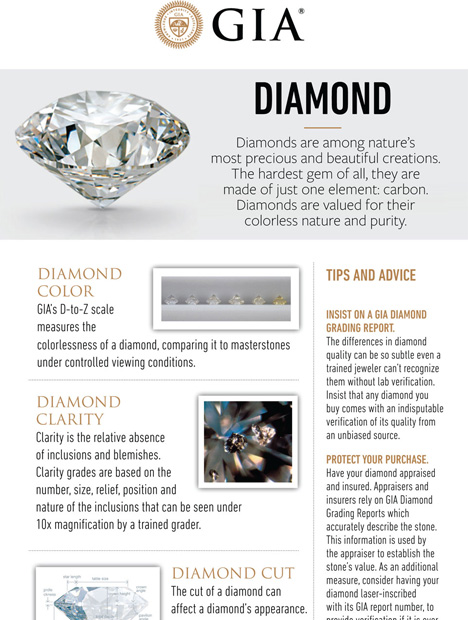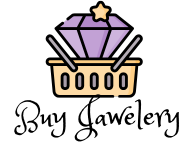
Diamonds symbolize love, commitment, and timeless elegance. Selecting the perfect diamond requires a blend of knowledge, patience, and discernment. Whether you are purchasing an engagement ring, a statement necklace, or an heirloom piece, understanding the intricacies of diamond buying ensures you make an informed decision.
This comprehensive guide delves into the essential factors to consider when choosing a diamond, equipping you with the insights needed to find a gem that meets your aesthetic and financial expectations.
The Four Cs: The Cornerstone of Diamond Evaluation
When exploring diamonds, the Four Cs—Carat, Cut, Clarity, and Color—serve as the foundational criteria for evaluation. Each plays a crucial role in determining a diamond’s beauty and value.
Carat: The Measure of Weight
Carat refers to a diamond’s weight rather than its size. While larger diamonds typically carry higher price tags, carat weight is only one aspect of a diamond’s overall allure. Smaller diamonds with exceptional cut and clarity can often outshine larger ones.
When selecting carat weight, consider personal preferences and the occasion. A well-proportioned diamond can appear larger than its carat weight suggests, particularly if set in a halo or bezel design.
Cut: The Key to Brilliance
The cut of a diamond dictates how light interacts with the stone. This, in turn, determines its brilliance, fire, and scintillation. A well-cut diamond will reflect light beautifully, creating that signature sparkle.
Cuts are graded on a scale ranging from Excellent to Poor. Prioritize the cut above other factors, as even a diamond with high clarity and color may appear lackluster if poorly cut.
Popular shapes, such as round, princess, and cushion, are favored for their brilliance. However, fancy shapes like pear, marquise, and emerald can offer unique aesthetic appeal while maximizing carat weight.
Clarity: Flawless or Included?
Clarity assesses the presence of inclusions (internal flaws) and blemishes (surface imperfections). While flawless diamonds are rare and highly prized, many inclusions are microscopic and invisible to the naked eye.
Clarity grades range from Flawless (FL) to Included (I). For most buyers, diamonds in the VS (Very Slightly Included) or SI (Slightly Included) range offer an excellent balance between quality and affordability.
Color: From Colorless to Fancy
Diamonds are graded on a scale from D (colorless) to Z (light yellow or brown). Colorless diamonds, particularly those in the D to F range, are the most sought-after and valuable.
Fancy-colored diamonds, such as pink, blue, and yellow, are a category of their own, celebrated for their rarity and vivid hues. If opting for a traditional white diamond, selecting a near-colorless grade (G to J) can provide significant savings without sacrificing visual appeal.
Setting a Budget
Before embarking on your diamond journey, establish a realistic budget. Diamonds are available at various price points, and knowing your financial limits ensures you focus on options within your range.
Allocate your budget according to personal priorities. For example, if sparkle is your main goal, invest more in the cut. If size is paramount, consider compromising slightly on clarity or color.
Choosing a Setting: Enhancing the Stone
The setting is the stage that showcases your diamond. From classic solitaires to intricate pavé designs, the right setting can enhance the stone’s beauty and protect it from damage.
Prong Setting
The prong setting is a timeless choice, allowing maximum light to pass through the diamond. It is ideal for showcasing brilliance but requires careful maintenance to ensure the prongs remain secure.
Bezel Setting
A bezel setting encircles the diamond with a metal rim, offering enhanced protection. This option is perfect for active individuals who prioritize durability without compromising style.
Halo Setting
Halo settings surround the central diamond with a circle of smaller stones, creating the illusion of a larger diamond. This style is particularly popular for its added brilliance and vintage charm.
Certification: Authenticity and Assurance
Always insist on a certified diamond. Reputable grading laboratories, such as the Gemological Institute of America (GIA) and the American Gem Society (AGS), provide detailed reports on a diamond’s specifications.
Certification offers peace of mind, ensuring the diamond you purchase matches its advertised characteristics. Avoid diamonds without certification, as they may lack transparency regarding quality and origin.
Exploring Lab-Grown Diamonds
Lab-grown diamonds are gaining traction as a sustainable and cost-effective alternative to natural diamonds. These stones are chemically, physically, and optically identical to their mined counterparts, offering exceptional value.
Choosing a lab-grown diamond can expand your options within a given budget, allowing for larger carat weights or higher quality grades. Additionally, these diamonds often come with the added assurance of ethical sourcing.
Ethical Considerations: Beyond Beauty
The diamond industry has faced criticism for environmental and ethical concerns. When purchasing a diamond, consider its origin and the practices behind its extraction.
Seek diamonds with conflict-free certification, indicating they have been sourced in compliance with the Kimberley Process. Lab-grown diamonds, as previously mentioned, provide a sustainable alternative for conscientious buyers.
Shopping Tips for the Discerning Buyer
- Research Thoroughly: Familiarize yourself with the Four Cs, diamond certifications, and current market trends. Knowledge empowers you to make informed decisions.
- Compare Options: Visit multiple jewelers, both online and in-store, to explore a wide range of diamonds and settings.
- Examine Under Different Lighting: Diamonds can appear different under various lighting conditions. Ensure the stone sparkles consistently in natural and artificial light.
- Ask Questions: Don’t hesitate to inquire about a diamond’s specifications, certification, and return policies. A trustworthy jeweler will provide clear and detailed answers.
- Trust Your Instincts: Ultimately, the right diamond is the one that resonates with you emotionally and visually.
The Timeless Appeal of Diamonds
Diamonds are more than gemstones; they are symbols of love, commitment, and achievement. Whether you’re selecting an engagement ring or investing in a piece of fine jewelry, understanding the nuances of diamond selection ensures your purchase is both meaningful and enduring.
By following this guide and prioritizing the factors most important to you, you can confidently choose the perfect diamond—a treasure that will be cherished for generations.
